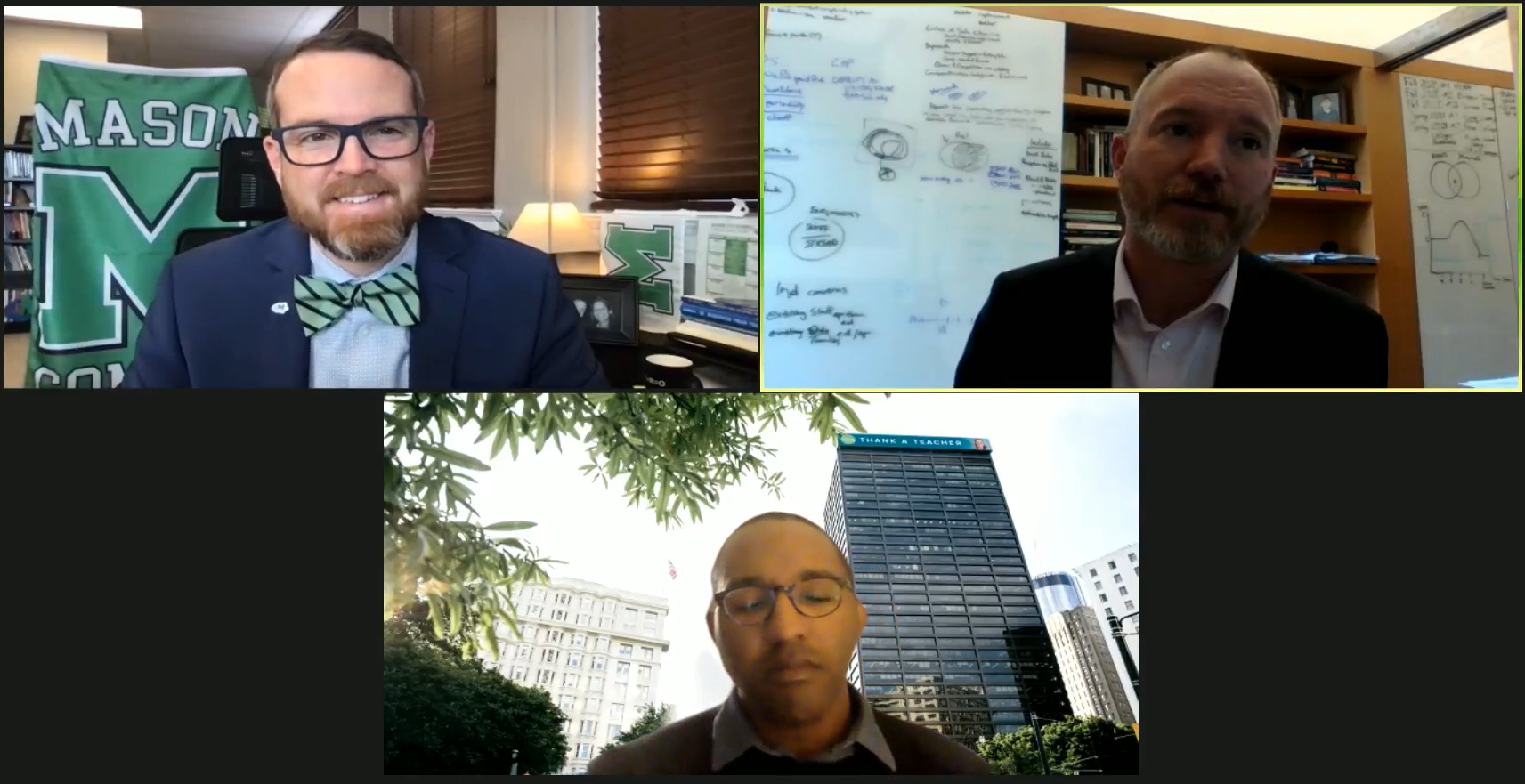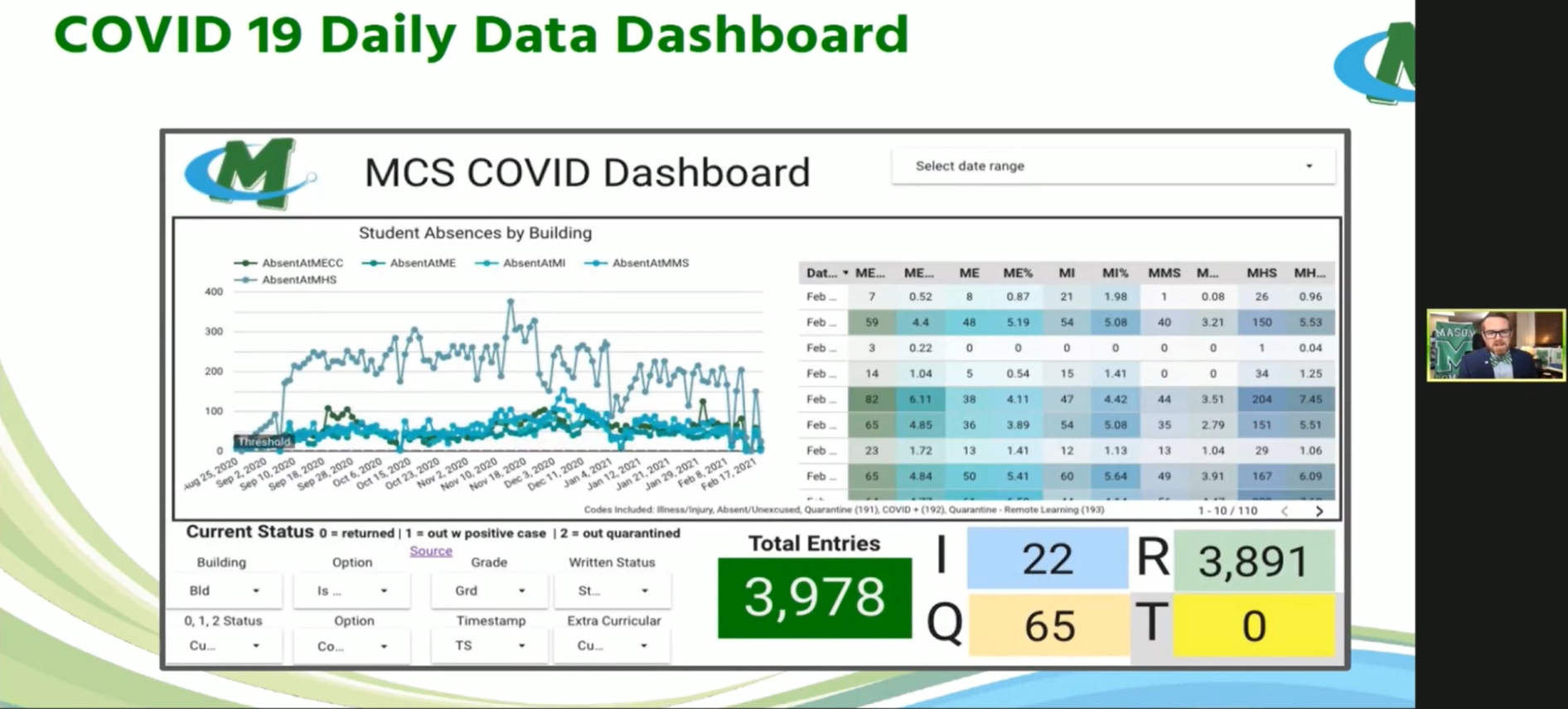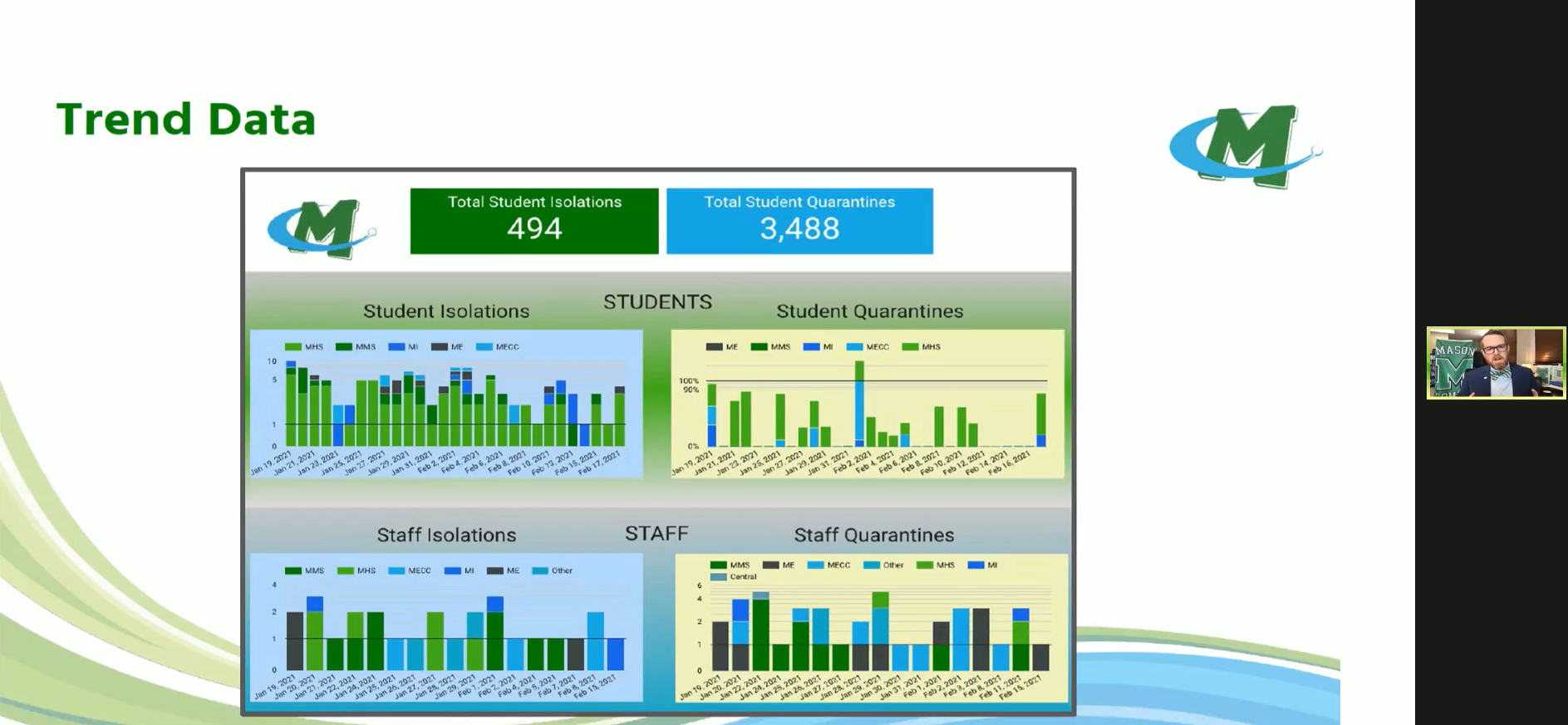By Amanda Paule |
The superintendent of Ohio’s Mason City Schools, Jonathan Cooper, made a personally painful call last March 12 to cancel the first event in his school district due to COVID-19. The event was a second-grade musical that his own daughter had been looking forward to starring in, but the onset of a nationwide pandemic had begun to announce its presence, and Cooper decided to act on the minimal information he had.
“What we figured out very quickly was we needed to have some data to make decisions,” Cooper told an AASA conference audience. “Because we were making decisions based on announcements from the governor and fear at that point in time.”
Soon, Cooper and his team had assembled their own COVID-19 Dashboard to track student attendance, COVID-19 cases and quarantine cases across the school district in southwestern Ohio. The school leaders began disseminating a daily, weekly and monthly report to their 10,500-student district.
“One of the things we had to do right away was to build confidence in our community and confidence with our teachers,” Cooper said. “And that came from transparent communication. As all of us know, it’s so important because if we didn’t have the trust of our community or staff there was no way we were going to stay open.”
 The Mason City Schools’ dashboard became a boon for collaboration with local hospitals, universities and the Ohio Department of Health to develop data-driven protocols and guidance for school safety. With this approach, the district has maintained in-person instruction since last August with 80 percent of its students.
The Mason City Schools’ dashboard became a boon for collaboration with local hospitals, universities and the Ohio Department of Health to develop data-driven protocols and guidance for school safety. With this approach, the district has maintained in-person instruction since last August with 80 percent of its students.
Districtwide dashboards like Cooper’s were later followed by a nationwide data-collection effort spearheaded by Emily Oster, an economics professor at Brown University, who partnered with AASA and Qualtrics. Oster joined Cooper and other panelists to discuss her COVID-19 School Response Dashboard during an AASA national conference panel by the same name on Friday, Feb. 19.
Panelist Nat Malkus, deputy director of education policy at the American Enterprise Institute, discussed his organization’s work tracking COVID-19 responses. In a six-wave, nationally representative survey, Malkus and his team observed inequalities in responses across districts.
For example, districts with higher poverty rates were less likely to have robust programs for virtual connection between teachers and students and were more likely to rely on instruction formats like send-home instructional packets. The survey also found that rural and politically red districts were more likely to have resumed in-person instruction sooner.
Malkus and his team are developing the Return to Learn tool, which is planned to be launched next week. It will graphically depict data relationships between school COVID-19 responses and district factors such as political leaning, change in conditions over time, and students’ broadband access.
 “The main thing that we are interested in doing for this is just to provide a good landscape understanding of what’s going on, overall and by a number of district variables, [to] give people the ability to look backwards and forwards to figure out what peer districts are doing,” Malkus said.
“The main thing that we are interested in doing for this is just to provide a good landscape understanding of what’s going on, overall and by a number of district variables, [to] give people the ability to look backwards and forwards to figure out what peer districts are doing,” Malkus said.
The conference panelists stressed the importance for school leaders to provide intuitive, up-to-date and accessible communications about COVID-19 case rates and resources to their districts. Byron Adams, a representative from Qualtrics, shared the Qualtrics Vaccine Navigator, a program designed to simplify and automate the vaccine-finding process for educators.
Malkus and Cooper agreed that vaccination of school staff should not necessarily be a determining factor for whether a school should reopen. Panelists encouraged school leaders to use national and district-specific data to inform decisions moving forward on regaining in-person instruction.
(Amanda Paule is a junior magazine, news and digital journalism major at Syracuse University’s Newhouse School of Public Communications and an intern with AASA’s Conference Daily Online.)
